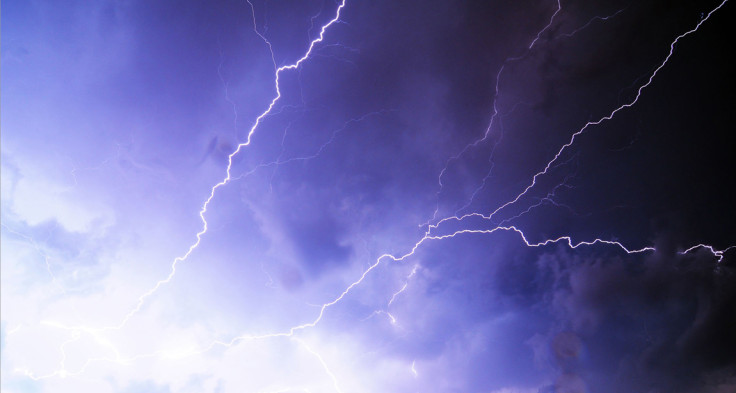NASA image displays 'rare' red sprite lightning
NASA's 'Astronomy Picture of the Day' for July 4 features sky phenomena that appears to be alien activity.
NASA shares a new image displaying fascinating astronomical phenomena every day on their official website in the 'Astronomy Picture of the Day' column. A recently shared image shows "rare sprite lightning" which some believed appears to be like aliens in our sky.
On July 4, NASA posted a picture titled "Meeting in the Mesosphere" by photographer Stephane Vetter. The picture was captured on a summit of the Vosges mountains in France showcasing the vast skies and red lightning forking out of the sky.
The Sun notes that the strange red fireworks in the sky over the French mountain range looks similar to what would be described as "alien invasion" or "giant red aliens." However, NASA provides a good explanation about the unusual red spikes falling out of the sky.
The explanation accompanying the image reveals that the picture was taken by a "sensitive video camera" on June 26. "Generated over intense thunderstorms, this one about 260 kilometers away, the brief and mysterious flashes have come to be known as red sprites," reads the description.
It further explains that such sights are a result of electrical breakdown at high altitudes occurring in the mesosphere that extends from about 50 to 100 kilometres above our planet. The temperature in this layer of Earth's atmosphere decreases as the altitude increases. The coldest area of the Earth's atmosphere lies at the top of the mesosphere.
"The transient luminous events are caused by an electrical breakdown at altitudes of 50 to 100 kilometers. That puts them in the mesosphere, the coldest layer of planet Earth's atmosphere," the explanation continues.
Meanwhile, the glowing light beneath the sprites is attributed to lightning below the storm clouds. The photo summary also addresses the right side of the video frame that captures "another summertime apparition from the mesosphere." What is visible on the right side of the image is known as polar mesospheric clouds or noctilucent clouds, a rather common phenomenon observed at night-time in high altitudes during summer.
"The silvery veins of light are polar mesospheric clouds. Also known as noctilucent or night-shining clouds, the icy clouds still reflect the sunlight when the Sun is below the horizon," reads the statement.

Meanwhile, red sprites have been observed as early as 1886 and were first documented photographically in 1989.
© Copyright IBTimes 2025. All rights reserved.





















